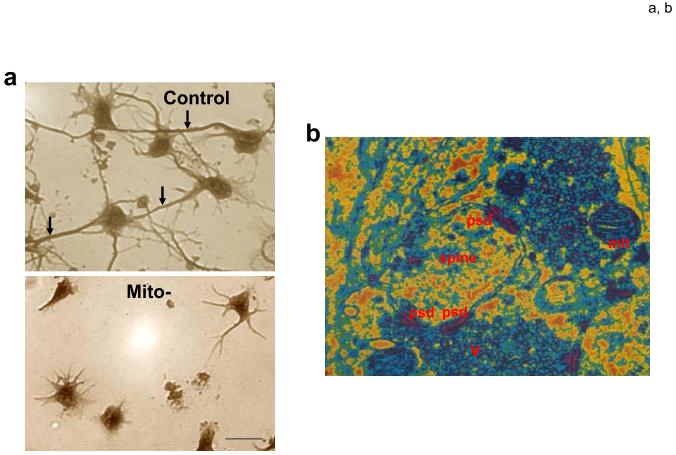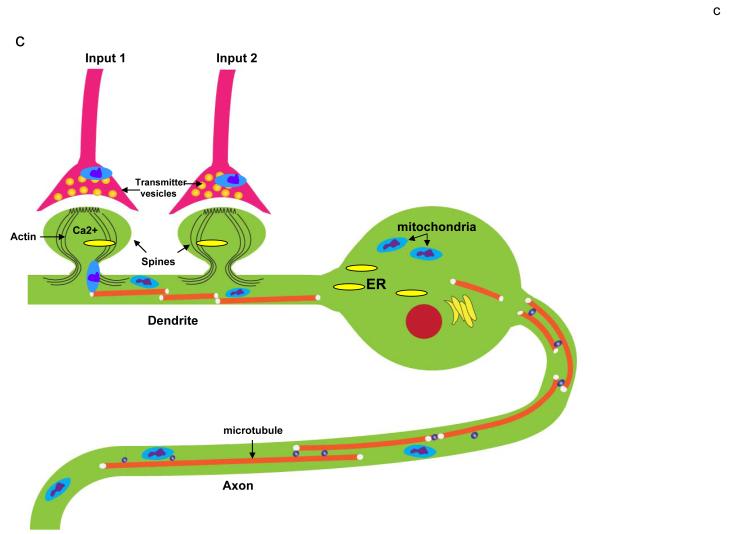Figure 4.
Roles of mitochondria in developmental and synaptic plasticity. a. Mitochondria play a pivotal role in axogenesis. At the time of plating in cell culture, embryonic rat hippocampal neurons were not (control) or were (Mito-) treated with ethidium bromide which damages mitochondrial DNA thereby rendering the ETC dysfunctional. Images show neurons approximately 4 days later; the neurons in the control culture elaborated long axons (arrows) and shorter dendrites, whereas the Mito- neurons formed only shorter process and no axon. b. Electron microscopic image of synapses in the adult rodent brain showing a dendritic spine with three postsynaptic densities (psd), two presynaptic terminals with numerous synaptic vesicles (v) and a mitochondrion (mit) in one presynaptic terminal. c. Involvement of mitochondrial motility in synaptic plasticity. This example shows a neuron receiving synaptic inputs onto two dendritic spines. Activation of Input 1 results in Ca2+ influx into the dendritic spine which induces the local engagement of cytoskeleton-mitochondria interactions resulting in the translocation of a mitochondrion to the base of that spine. In contrast, mitochondria are not recruited to an adjacent inactive synapse (Input 2). Mitochondrial transport along axons and dendrites may also be influenced by action potentials. By moving to regions of active synapses mitochondria may contribute to plasticity by increasing the local supply of ATP and by buffering and releasing Ca2+. ER, endoplasmic reticulum.


